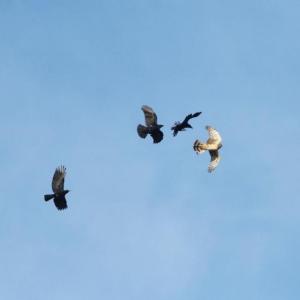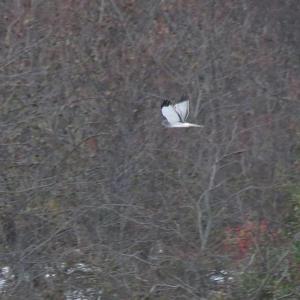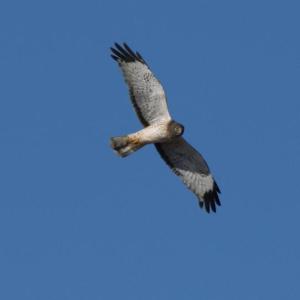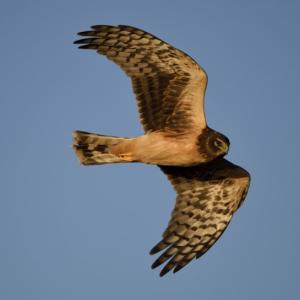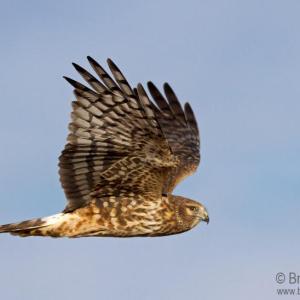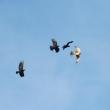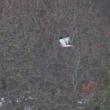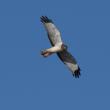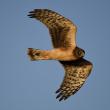Kristen Lindquist: The poetry of the harrier
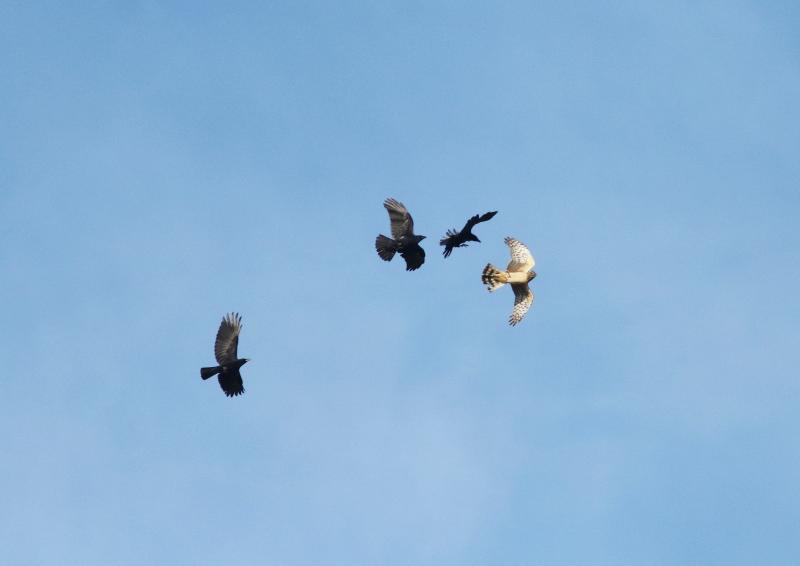 A Northern Harrier was mobbed by crows as it passed over Weskeag Marsh recently. )Photo courtesy Don Reimer)
A Northern Harrier was mobbed by crows as it passed over Weskeag Marsh recently. )Photo courtesy Don Reimer)
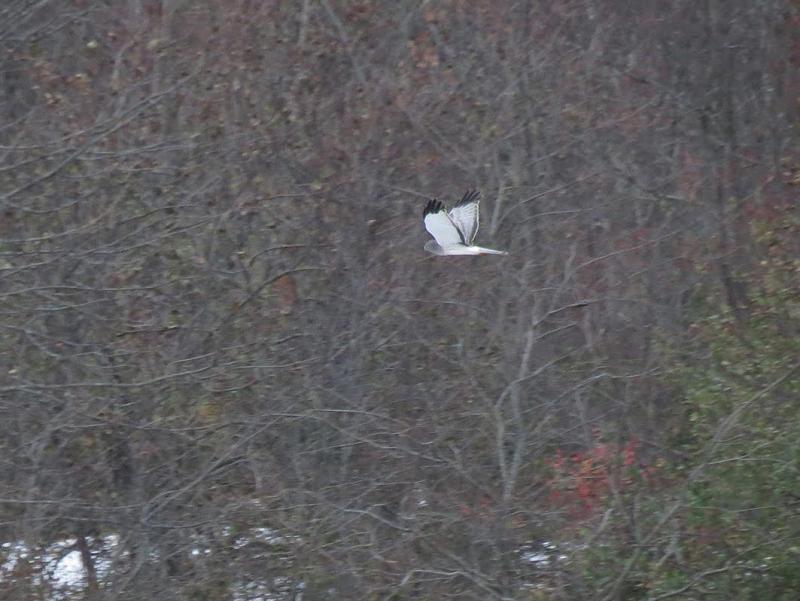 The “grey ghost”: a male Northern Harrier surveying Beech Hill Preserve in Rockport. (Photo courtesy Brian Willson)
The “grey ghost”: a male Northern Harrier surveying Beech Hill Preserve in Rockport. (Photo courtesy Brian Willson)
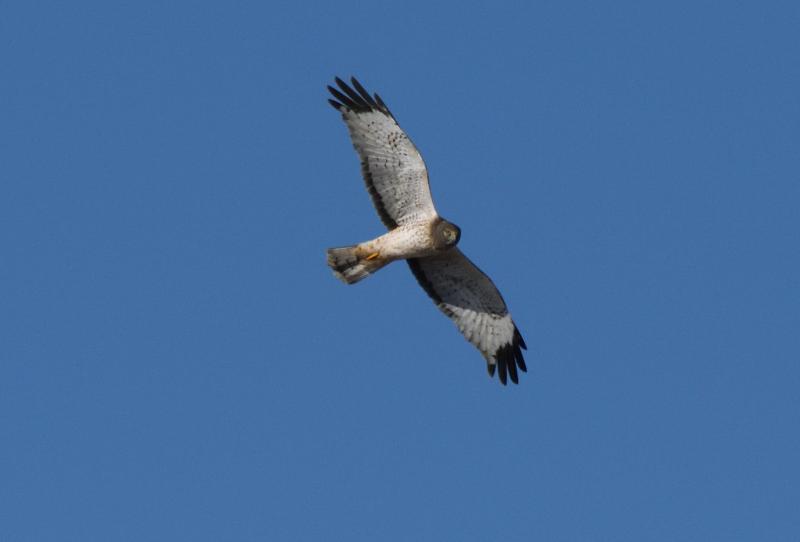 The “grey ghost” adult male harrier is very pale underneath with dark wingtips and trailing edges. (Photo courtesy Bill Thompson)
The “grey ghost” adult male harrier is very pale underneath with dark wingtips and trailing edges. (Photo courtesy Bill Thompson)
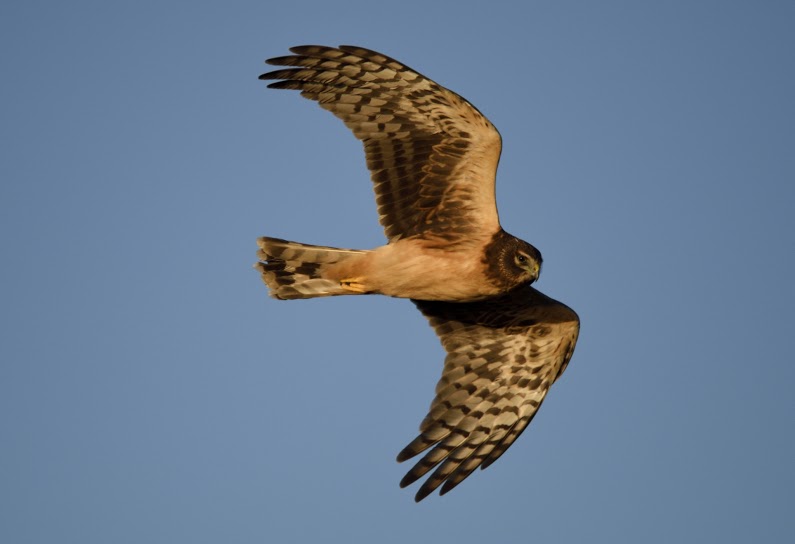 A juvenile Northern Harrier showing off its rusty-buff underparts. (Photo courtesy Bill Thompson)
A juvenile Northern Harrier showing off its rusty-buff underparts. (Photo courtesy Bill Thompson)
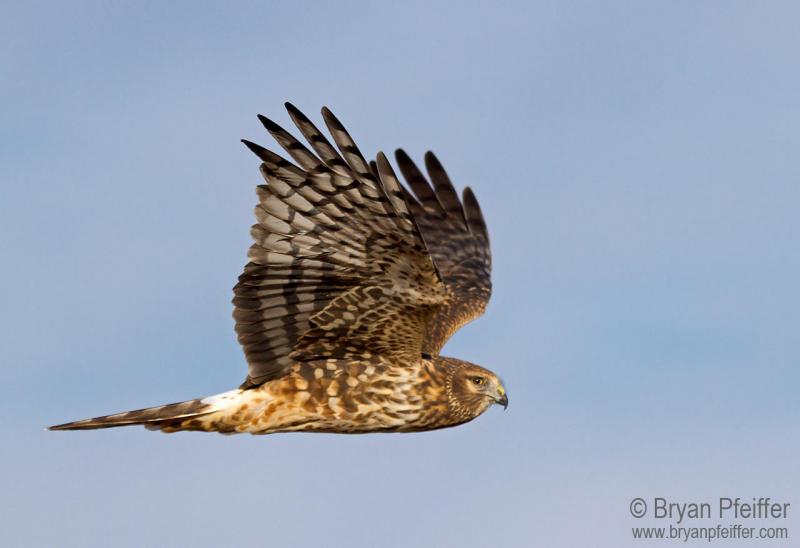 The diagnostic white rump patch is visible on this female harrier. (Photo courtesy Bryan Pfeiffer)
The diagnostic white rump patch is visible on this female harrier. (Photo courtesy Bryan Pfeiffer)
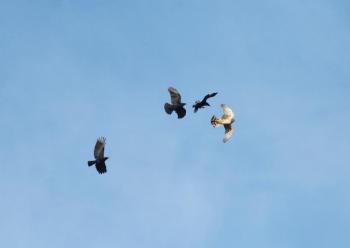 A Northern Harrier was mobbed by crows as it passed over Weskeag Marsh recently. )Photo courtesy Don Reimer)
A Northern Harrier was mobbed by crows as it passed over Weskeag Marsh recently. )Photo courtesy Don Reimer)
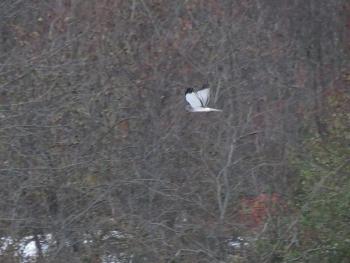 The “grey ghost”: a male Northern Harrier surveying Beech Hill Preserve in Rockport. (Photo courtesy Brian Willson)
The “grey ghost”: a male Northern Harrier surveying Beech Hill Preserve in Rockport. (Photo courtesy Brian Willson)
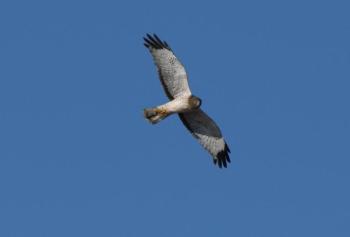 The “grey ghost” adult male harrier is very pale underneath with dark wingtips and trailing edges. (Photo courtesy Bill Thompson)
The “grey ghost” adult male harrier is very pale underneath with dark wingtips and trailing edges. (Photo courtesy Bill Thompson)
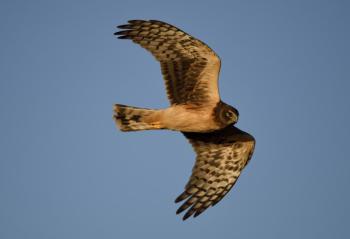 A juvenile Northern Harrier showing off its rusty-buff underparts. (Photo courtesy Bill Thompson)
A juvenile Northern Harrier showing off its rusty-buff underparts. (Photo courtesy Bill Thompson)
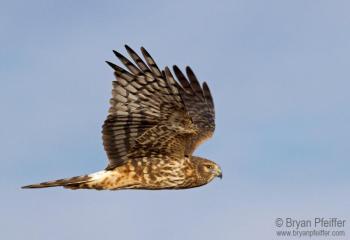 The diagnostic white rump patch is visible on this female harrier. (Photo courtesy Bryan Pfeiffer)
The diagnostic white rump patch is visible on this female harrier. (Photo courtesy Bryan Pfeiffer)
This is the time of year when we become so desperate for signs of spring that we go on long drives to find them. One of our favorite spring drives, when not following a stay-at-home order, of course, is inland along Appleton Ridge. The greening blueberry barrens host a couple of early-arriving birds of prey that we especially look out for: the American Kestrel, our smallest falcon, and the Northern Harrier, formerly known as the Marsh Hawk.
Poet and friend Kate Barnes, who lived on Appleton Ridge until her passing in 2013, used to call me each spring when she spotted the first migrant kestrel or harrier hovering over the fields near her house. During one call to share the news of a harrier sighting, to my great delight she read me a poem she’d just written: “The Harrier” has been a special favorite of mine since that day and ended up in her last published book, Kneeling Orion (David R. Godine, 2004).
In the poem, the sight of “the harrier quartering/over the brown grass” reminds her of angels, causing her to wonder, whimsically, if angels ever catch mice. “Everything,” she goes on to say, “is here to accept this morning, to take in,/to applaud…” This is a celebration of earliest spring, April with its shifting clouds and sunlight, the potentiality of the still-bare trees—“(but we know/there are buds on those pale twigs)”—and the mutable blue of distant hills.

The “changeable” outer landscape then shifts to an interior one, becoming a celebration of the simple act of breathing: “like the breath in my body, in and then out… as long as it will.” As a dynamic presence within the ridge landscape, the angelic harrier inspires an in-the-moment meditation on respiration; literally, life itself.
And indeed, there is real poetry in the meditative flight of the harrier. This large raptor glides low, back and forth over the barrens on long, wide wings swept up in a vee. The male harrier, sporting grey plumage accented with dark wingtips and trailing wing edges, is often referred to as a “grey ghost” for the way he floats along. (I like to imagine that a grey ghost sparked Kate’s poem and her angel comparison.) In contrast, the equally floaty female is brown, with streaked underparts. Both sexes flash a big white rump patch at the base of their long tail that is easily visible from above.

A harrier hunting over a marsh or field, head down, is not so much looking for something to eat as listening for it. The hawk’s concave facial disc gives it an owl-like appearance. And as with an owl, the feathers of this disc help pick up sounds made by a tasty vole or frog tucked in the reeds below.
The near-silent flight of the harrier enables it to swoop down like an angel of death on its prey, which probably never knows what hit it. Overall, the bird enjoys a rather cosmopolitan diet, eating pretty much whatever it might find in or near a meadow or marsh: a variety of rodents and other small mammals, frogs, snakes, insects, even other birds.

If prey is abundant, a male harrier may support up to five mates in one season. To attract a female, he performs a sky-dance that the Cornell Lab of Ornithology describes as “undulating, rollercoaster-like flights up to 1,000 feet off the ground, sometimes covering more than half a mile.” While I’ve always thought the woodcock’s spring sky-dance was something to behold, the larger harrier’s aerobatic display sounds even more spectacular!

The mated pair nests on the ground in an open area such as high marsh or tundra, with the nest usually tucked into a sheltering stand of vegetation like cattails or reeds. The male does all the hunting for each of his nests, dropping over the nest whatever food he gets for the female to fly up and catch. Observations have shown that he spends half his time hunting for food and may fly up to 100 miles a day doing so. While he’s an excellent provider, studies have shown that when the female dies and the male is left to tend to the nestlings, they usually die, too. Making clear the true power of maternal instinct, apparently the male doesn’t know to tear up the meat he brings into smaller pieces for the nestlings to swallow.
Since much of the Northern Harrier’s breeding territory is north of coastal Maine, the hawk is not an unusual sight along fall migration flight paths. As with many hawks, it migrates during the day and alone—as with some human couples, a pair does not stay together once their nestlings have flown the coop.
The harrier is typically one of the easier species to pick out at a hawk watch. Its larger size and long tail combined with its dihedral wings are giveaways; and, when close enough, the white rump patch is diagnostic. An immature harrier is an especially striking bird in flight overhead, with rusty-buff underparts and a banded tail.
And of course, over open terrain such as blueberry barrens or a saltmarsh, nothing floats as distinctly and beautifully as “the quartering harrier.” My first sight each spring of a returned grey ghost never fails to stir in me fond memories of Kate Barnes, Maine’s first poet laureate, whose birthday was April. Her keen eye took in the most telling poetic details of the natural world around her, and her poet’s ear was always tuned like a harrier’s to that poem hiding amid the weeds.
Kristen Lindquist is an amateur naturalist and published poet who lives in her hometown of Camden.
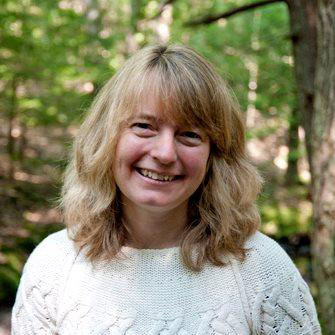
Event Date
Address
United States

